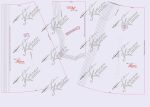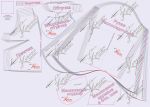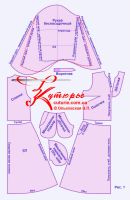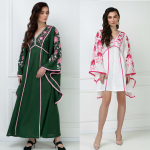Size charts What is the height of the pattern Payment methods Ask a question Reviews
Instructions for embroidered dress patterns, loose cut
Large and small sizes. Cutting and sewing at home
- Description of patterns for loose embroidered dress in boho style.
- What patterns are included in the pattern kit.
- Description of the design of the style.
- What fabric to make the dress from.
- How to cut an embroidered dress.
- How to sew an embroidered dress.
Pattern Description
 Embroidered dress patterns, cut-off loose
Embroidered dress patterns, cut-off loose
Sizes: 40–52 and 52–64.
File format: PDF full size and without seam allowances
After paying for the order, you will receive links to download two files Patterns of embroidered dress cut-off loose from 40 to 52 or from 52 to 64 sizes:
- PDF file A4, adapted for printing patterns on sheets of A4 paper in any program on any device, including mobile phones.
- Multi-format PDF file for printing on sheets of any size from A0 to A4 on a printer or plotter using Adobe Reader.
The level of difficulty is simple, but some experience in cutting and sewing and experience in creating embroidered clothing is necessary.
The style is suitable for all types of figures of various fullness.
Pattern is for home use only.
Complete set of embroidered dress patterns, cut-off loose
- Back patterns: Back (bodice) and ZP (Back half - Back skirt).
- Front patterns: Front (bodice) and PP (Front half - Front skirt).
- Sleeve pattern (three in one).
- Collar pattern.
- Stitching for finishing the neckline.
- Burlap patterns for processing a pocket in the side seam and for a cut-off barrel pocket - Burlap valance and Burlap facing.
Description of the design of the embroidered dress pattern, cut-off loose
This is a simple, laconic style of a detachable loose dress with an extended skirt.
Side bust dart.
The neckline has an original shape and the stand turns into a triangular neckline.
The sleeves are flared and have a curved hem. You can choose either extreme expansion or conditionally average (as in the photo).
Please note that the flared sleeve is marked with a regular non-stop sleeve. This is done both to understand the design and to be able to use it if it is necessary to save fabric and simplify the task.
What to sew an embroidered dress from
Linen, chintz or cambric are traditional fabrics for ethnic clothing. You can use sheet fabric and thin denim.
Do not use gabardine or artificial linen. Unfortunately, today a lot of ethnic clothes with bright embroidery are made from cheap, stiff viscose.
The consumption, depending on the size, will be from 200 cm to 270 cm with a width of 150 cm.
Before buying fabric, it is advisable to lay out the patterns of the length of the dress you need on any cut. This is the only way to accurately determine the consumption of fabric.
Instructions on how to buy, how to print yourself and others
How to choose a size without using tables and taking measurements
What height are the patterns for?
How to buy a ready-made electronic pattern
How to print a pattern at home in full size on A4 sheets or on sheets of any other size
How to assemble a pattern after printing
Simple patterns for dresses, sweatshirts, skirts and trousers in full size Free
How to cut an embroidered dress using a simple ready-made pattern
 Let's consider cutting with a medium-width sleeve option (pictures 2 и 3). Variations of layouts that are possible when cutting small and large sizes are shown.
Let's consider cutting with a medium-width sleeve option (pictures 2 и 3). Variations of layouts that are possible when cutting small and large sizes are shown.
See the example for how to cut for “maximum” sleeves. cutting out another embroidered dress
It's simple - the fabric is folded in half, the edges are aligned and the patterns are laid out taking into account the proportional direction and seam allowances.
If you plan to embroider, then it is advisable to cut out the parts with a large margin so that they can be hooped.
Of course, in this case it is worth considering whether the embroidery will be machine or hand-made, what size the embroidery design is and, as a consequence, the size of the hoop in which the part is hooped. Or the part will not be hooped, but only attached to the applied material, for example, to adhesive and/or water-soluble interlining... The seam allowances will depend on this.
Below are considered standard seam allowances, without taking into account the many possible variations.
So, seam allowances are 1 cm, but there are exceptions.
Allowances are not required for the edges and armholes, as well as for the sprout and neckline (sprout - back neckline). No allowance is required at the waist of the skirt.
At the bottom - up to 3 cm for a hem with a closed cut.
Add 3-4 cm along the waist section of the bodice. This is the allowance for fitting. After trying on, at the stage of connecting the bodice with the skirt, it can be cut off or left as a reserve if the fabric shrinks after washing.
The allowance at the bottom of the sleeve is at the discretion of the couturier, that is, it depends on the processing method you choose. The simplest and most rational method is to sew it with bias tape made from the same fabric as the entire dress or in a contrasting color. Edging is also possible, but will give a tougher cut.
Now about the middle seams.
 Of course, you can cut without middle seams, but this will greatly increase the consumption and number of fabric falls.
Of course, you can cut without middle seams, but this will greatly increase the consumption and number of fabric falls.
As can be seen in Fig. 2–3, we have layouts where there is a seam along the back of the bodice and along the waist of the skirt.
These seams can be used to create an additional zipper at the waist.
Please note that the middle seam of the seal does not coincide with the longitudinal direction. This approach will give us a product in which the stretching of the side seams during wear is not so noticeable.
As for cutting the collar, it is better to cut it after the first fitting, when the exact length of the neck is already known.
The collar can be cut with a lobe in the middle or on the bias. On the layout for small sizes (Fig. 2) both options are shown. You can also cut the upper collar with a lobe in the center, and the lower one - along the bias.
Facing for the neck - can be cut out without a seam, the pattern is laid half-skidded on the fold (Fig. 2). Or with a lobe along the neck (Fig. 3).
Cut-off barrel type pockets - allowances of 1 cm are added around the burlap, but not at the entrance to the pocket; at the entrance to the pocket - 0,5 or not added at all.
For a pocket in the side seam - 1 cm along all cuts or not at all.
After cutting, do not forget to apply the necessary markings and notches to the parts.
Usually, notches are made along the middle lines of the parts and along the waist.
Be sure to mark the half-skid and the middle line of the sleeve (with an interfacing seam) in order to make sure during fitting that the product is symmetrical and that the sleeve is sewn in correctly.
If there are pockets in the side seams, we make notches on the side sections of the skirt. To do this, all four slices are added together. We step back 5–7 cm from the waist and make the first notch. The second notch is along the burlap.
How to sew an embroidered dress
The main thing for sewing ethnic dresses is zaposhivochny (linen) seam.
The following is an approximate simplified sewing sequence. Of course, due to different embroidery nuances, the sewing sequence may be different.
Please note that it is better to sew a dress with two fittings. The difference between a bag and a woman's dress is achieved precisely by two fittings.
- Assemble the bodice for fitting by hand or with a basting stitch on a machine.
- Finish skirt pockets.
- Assemble a skirt for fitting.
- Gather the sleeves.
- First fitting. Try on a bodice with an elastic band at the waist. Mark the cut of the waist and decide whether a zipper is needed along the middle seam (15 cm up from the waist and 15 cm down - a very convenient additional fastener). If necessary, trim the armhole to fit. Try on a skirt, try on a sleeve.
- Next, you can sew the bodice, skirt and sleeve with a linen seam. Collect them together, that is, sweep them by machine or manually.
- We cut out the collar.
- Second fitting. We knock the bottom off the floor and see what can be corrected. Trying on the collar.
- We process the collar. We sew it in and sew it in.
- We process the neck.
- We process the remaining seams.
- Bottom of sleeves and bottom of dress.
Download this pattern pdf:
Embroidered dress pattern, cut-off loose
$3.00 (120 hryvnia)
Bank cards of the Russian Federation are not accepted for payment!
Size charts What is the height of the pattern Payment methods Ask a question Reviews
Vera Olkhovskaya in social networks:

See similar clothing patterns and how to sew on them
-
Any pattern for free for a review of a previously made order
More...
Lifetime promotion for buyers of patterns!

Leave a review about my store of patterns for an order that you made before, and you will receive any paid pattern of your choice Free!




















